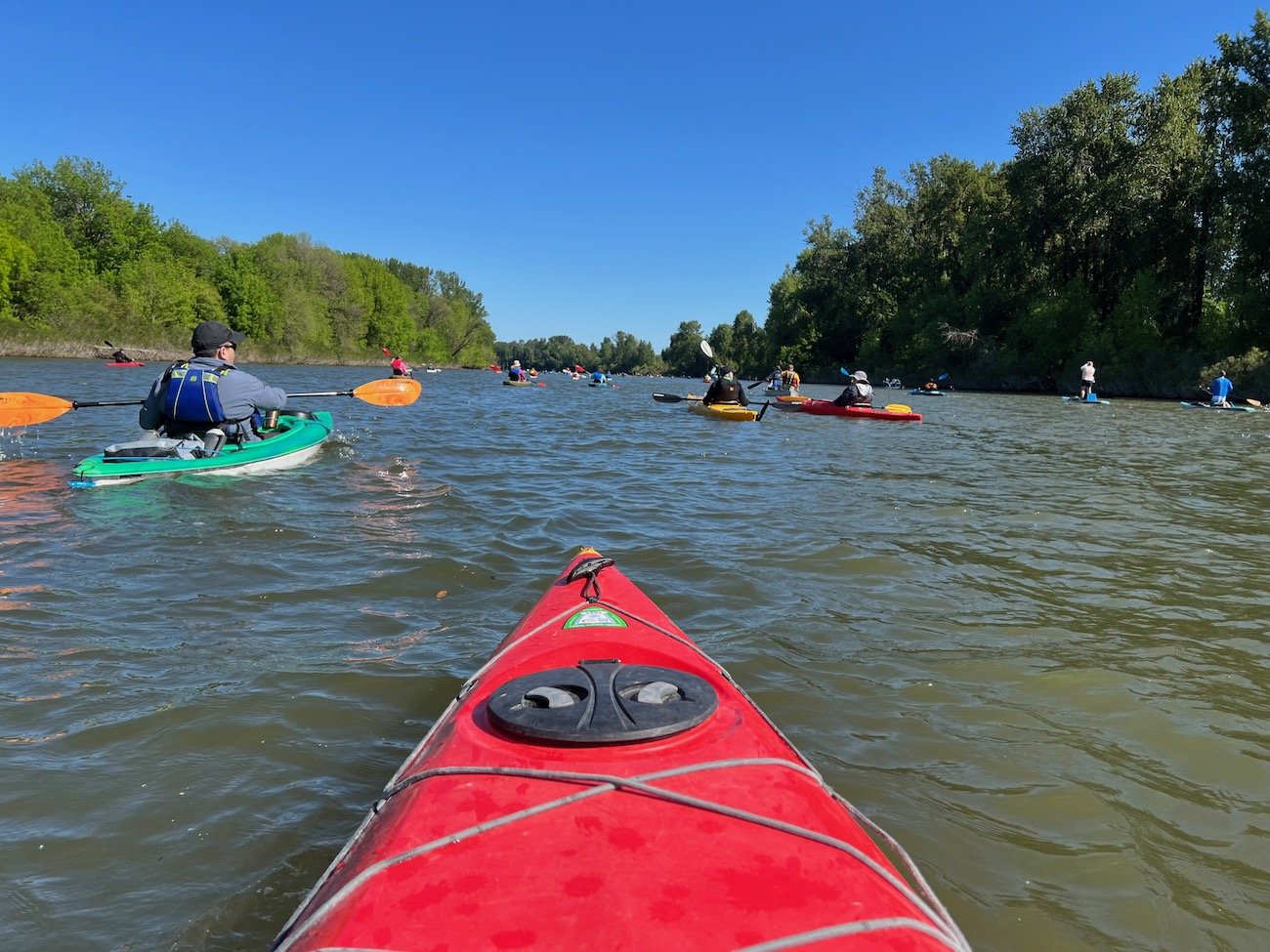How to plan a river clean-up in 2024 [kayaker edition]
As flatwater kayakers, we have the rare privilege of traversing the veins of our beautiful planet. The calm rivers and serene lakes of the Pacific Northwest are our playground and sanctuary – it’s where I retreat when I need solace in my life, and to reconnect with myself and the beauty of Mother Nature.
But sadly, as we all know, increased human footprints and irresponsible behavior in these pristine areas demands a more significant response from recreational kayakers and paddling businesses. We’re not only explorers, but also custodians.
In this article, we’ll guide you in easy steps through planning a river clean-up from your kayak, which can help ensure both the preservation of our natural world and paddler safety throughout the process.
The purpose of river clean-ups
River clean-ups are not just about removing the visible waste from our waterways. They are a proactive way to prevent harmful substances from further infiltrating our rivers and lakes, disturbing marine life, and disrupting the ecosystem's balance. Plus, these efforts help improve the overall aesthetics of our beloved waterways, keep Pacific Northwest wildlife (and beyond) healthy and thriving, and preserve their natural beauty for future generations.
Step-by-step guide to plan your own community river clean-up
Plan your own kayak group river clean-up with these clear steps:
Research & select a location: Start by identifying a stretch of river or a lake that requires attention. If you're unsure, local wildlife agencies or conservation bodies can help point you in the right direction.
Get permissions: Depending on the location, you may need to obtain permissions from local authorities or landowners. Ensure you comply with all regulations to prevent any legal complications. Calling up your community government office will help you tackle this step.
Gather a team: Organizing a river clean-up requires teamwork. Rally fellow kayakers, friends, family, and local community members to help with your cause. Contact nonprofits and local kayak businesses who may want to participate as well. Plus, cleaning up outdoors is more fun with friends! If you’re planning a river clean-up in Oregon, Washington, or Idaho, you can even contact us at Flatwater Kayak Club and let us know too.
Set a date and plan logistics: Choose a date that gives your team enough time to prepare. Remember to consider weather conditions, water levels, and safety precautions when determining the best event date for your river conservation clean-up.
Gather supplies: Essential supplies include sturdy protective gloves, trash grabbers, waterproof bags for waste collection, a first aid kit, life vests, water bottles, and, of course, kayaks. Always wear personal flotation devices while on the water! Safety first. We also recommend checking out the brand Hold On for garbage bags – they’re made from strong, durable, plant-based, and home compostable material, and the perfect eco-friendly alternative to plastic garbage bags. We use them ourselves, and they’re great.
Educate your team: Before embarking on your river clean-up journey, educate your paddling team about the importance of their efforts, safety precautions, potential hazards, and how to correctly identify and dispose of waste. You may even ask people to sign waivers. It’s also helpful to review general kayaking safety tips, such as what to do if you fall out of your boat, if your kayak flips over, you lose your paddle, or the current picks up. We suggest partnering with a local paddle shop for increased community, expertise, and guidance to pull off a successful, fun, and productive river clean-up. You may be able to get some expert guides to support your event pro-bono too!
Have fun and clean-up: Collect waste in your waterproof bags, taking care not to disturb the natural environment. Enjoy the beautiful scenery with other kayaker conservationists, and take photos and videos when you can to document the clean-up efforts.
Responsible garbage disposal: After the clean-up, ensure all waste is disposed of responsibly (no illegal dumping), and recycle what you can.
Post-clean-up analysis: Document the waste you collect, compile your media files, and share this data with local environmental organizations, nonprofit groups, and media in your community. Your findings can contribute to larger research efforts.
Prioritizing kayaker safety
During your river clean-up, safety should be your top priority for all participants. Always wear appropriate gear (always wear a PFD), stay hydrated, use sun protection, and avoid overexertion. Never handle dangerous items without proper training or equipment. If you come across hazardous waste, mark its location and inform local authorities.
Also, follow kayaking safety practices, such as paddling with a buddy, checking the weather, staying close to the shore, and keeping a safe distance from wildlife.
Summary
As stewards of nature, our responsibility extends beyond merely enjoying the breathtaking views. Organizing a river clean-up from your kayak allows us to directly contribute to the well-being of our beloved waterways. With safety, knowledge, and teamwork, we can help preserve these critical and majestic bodies of water for future generations.
More free conservation articles:
10 Code of Conduct rules for kayakers to follow to protect wildlife & nature
Observe wild sea lions from your kayak
Willamette River conservation: how kayakers can help
20 breathtaking wildlife species you can observe in the Pacific Northwest while kayaking
5 best tips to observe bald eagles in the wild




